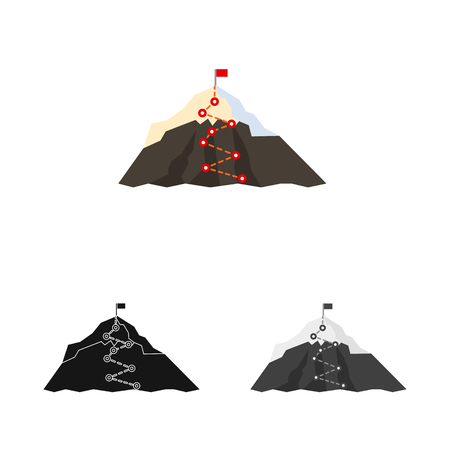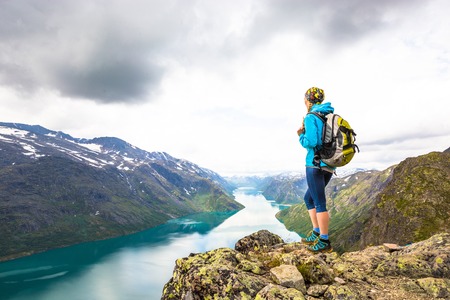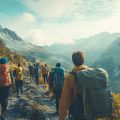Assessing Your Water Needs in the Wild
When you find yourself lost in the backcountry, your first priority is water. Survival experts agree: you can last weeks without food, but only a few days without water. The amount of water your body needs depends on the environment, your activity level, and even your age or health. In temperate forests, you might need about half a gallon (roughly 2 liters) per day just to stay hydrated. If you’re hiking under the blazing sun in the desert Southwest, that number can double or triple fast. Sweat evaporates before you notice it, and wind only accelerates dehydration. Recognizing early signs of dehydration is crucial—think dry mouth, headache, dizziness, dark urine, and muscle cramps. Ignore these warnings, and your judgment tanks right along with your energy levels. Out here, running dry isn’t just uncomfortable—it’s deadly. Assess your surroundings and ration wisely; knowing when to push on for water or hunker down could mean the difference between rescue and a rescue mission.
2. Locating Natural Water Sources
When you’re lost in the American backcountry, water is non-negotiable. Your survival hinges on your ability to read the land and spot natural water sources before dehydration sets in. You need hard skills and sharp observation—no guesswork allowed. Here’s how to identify rivers, streams, seeps, and other drinkable sources using environmental cues, terrain features, and wildlife behavior.
Terrain Tactics: Reading the Landscape
Water always seeks the lowest point. Use this fact to your advantage by scanning for valleys, gullies, or depressions in the ground. Dried creek beds often signal a water source nearby—follow them downhill. In mountainous areas, look for V-shaped valleys rather than U-shaped ones; V-shapes are typically carved by running water.
Key Terrain Indicators
| Indicator | Description |
|---|---|
| Valleys/Gullies | Natural collection points for runoff; follow downhill |
| Dried Creek Beds | May lead to flowing water downstream or pockets of trapped water |
| Lush Vegetation | Denser greenery often marks higher soil moisture or hidden springs |
Wildlife Clues: Nature’s Guides
If you’re not seeing obvious signs of water, pay attention to wildlife. Game trails—well-trodden paths from animals—often lead straight to a watering hole. Birds are another reliable indicator: Flocks flying low at dawn or dusk are usually headed to water. Bees and ants seldom stray far from a source either; follow their flight lines or trails if you spot them.
Wildlife Signs Table
| Sign | What It Means |
|---|---|
| Game Trails | Animals consistently walk these paths to drink; follow them with caution |
| Bird Activity | Increased bird presence at certain times can indicate nearby water |
| Insect Patterns | Clusters of bees/ants suggest water within a few hundred yards |
Environmental Cues: Sensing Hidden Water
The environment itself drops hints if you know what to look for. Listen for the sound of running water—a subtle trickle can travel far in quiet woods. Cool air or mist at dawn may signal a stream nearby. In arid regions, watch for rock outcrops with damp soil beneath or mossy patches that betray underground seepage.
Tactical Takeaway
Your best bet is to combine these strategies—read the terrain, observe animal behavior, and tune into environmental signals. When you put it all together, you stack the odds in your favor and increase your chances of finding lifesaving water in any American wilderness scenario.

3. Evaluating Water Quality and Risks
Before you scoop up that tempting creek water, it’s essential to size up the risks with a hard-eyed survival mindset. Not all water is created equal in the American backcountry, and your ability to visually assess its quality can mean the difference between a safe return and a gut-wrenching disaster. Start by checking for obvious contaminants: is the water muddy, oily, or filled with floating debris? Clear doesn’t always mean clean, but cloudy or discolored water usually signals trouble. Scan for signs of algae blooms—bright green or blue-green scum can release toxins deadly even after purification. Next, consider the source. Water running fast over rocks is generally safer than stagnant pools where bacteria and parasites love to breed. Stay away from water near campsites, livestock, or heavy wildlife traffic; these areas are hotspots for fecal contamination and pathogens like Giardia or Cryptosporidium. Look upstream for dead animals or trash—if you spot either, move on. Don’t forget environmental hazards either: avoid collecting near mining operations, old wells, or agricultural runoff zones where chemicals might leach into streams. In short: trust your eyes, use your nose (sulfur or chemical smells are red flags), and remember—when in doubt, hike further for a better source before you start any purification process.
4. Purification Methods: From Primitive to Modern
When youre lost in the backcountry, finding water is only half the battle—making it safe to drink is just as critical. Untreated water can carry pathogens that lead to debilitating illnesses like giardia or cryptosporidiosis, which can wreck your chances of survival. Heres a no-nonsense rundown of purification methods, from primitive tricks to high-tech gear, so you stay one step ahead of trouble.
Boiling: The Old-School Gold Standard
If you have access to fire and a metal container, boiling is your most reliable option. Bring water to a rolling boil for at least one minute (three minutes above 6,500 feet) to kill bacteria, viruses, and protozoa. Its simple, effective, but requires fuel and time—a luxury if youre on the move.
Chemical Treatments: Lightweight and Effective
Chemical purification is a go-to for many American hikers because its compact and easy. Tablets or drops using iodine or chlorine dioxide are common choices. They destroy most harmful organisms but may leave an aftertaste and take up to four hours for certain parasites.
| Chemical Type | Effective Against | Treatment Time | Notes |
|---|---|---|---|
| Iodine Tablets | Bacteria, Viruses | 30 mins–1 hour | Avoid if pregnant or thyroid issues |
| Chlorine Dioxide Drops/Tablets | Bacteria, Viruses, Protozoa | 30 mins–4 hours | Better taste than iodine, more thorough |
Portable Filters: Fast and Field-Proven
Pump filters and squeeze systems are staples in every serious backpackers kit. These devices physically remove bacteria and protozoa but may not block viruses due to their small size. Look for a filter rated at 0.2 microns or smaller for best results. Some advanced models combine filtration with chemical treatments for broad-spectrum protection.
Popular Filter Types:
- Squeeze Filters (e.g., Sawyer Mini): Lightweight, easy to use directly from the source.
- Pump Filters (e.g., MSR MiniWorks): More robust, suitable for larger groups.
- Gravity Filters: Good for base camps; set it up and let gravity do the work while you handle other survival tasks.
Emergency Improvisation: Survival Mindset Required
If you’re caught without gear, improvise. A makeshift charcoal filter using layers of cloth, sand, and charcoal can help remove sediment and some contaminants but wont kill microorganisms—always follow up with boiling or chemical treatment if possible. In dire situations, solar disinfection (SODIS)—leaving clear plastic bottles in direct sunlight for six hours—can reduce pathogens but should be a last resort.
Key Takeaways:
- Always double up on purification methods if water sources are highly suspect.
- No single method covers all threats—know your options and adapt fast.
- Your life depends on clean water; never cut corners when purifying what you drink.
Mastering these purification techniques gives you a real edge when lost in the wilds of America’s backcountry—where failure isn’t an option.
5. Safe Water Storage and Handling
Mastering backcountry hygiene isn’t just about finding and purifying water—it’s also about how you store, transport, and reuse your water containers. Once you’ve gone through the trouble of sourcing and treating water, improper storage can quickly turn safe hydration into a health hazard. Always use dedicated, clean water bottles or hydration bladders for drinking. Never mix containers used for untreated water with those holding purified water; cross-contamination is a surefire way to get sick in the wild.
Choose the Right Containers
Opt for rugged, BPA-free bottles or collapsible bladders with wide mouths for easy filling and cleaning. Avoid reusing single-use plastic bottles—they’re prone to cracks and bacterial buildup. If you’re in bear country, consider scent-proof bags or hard-sided containers to prevent unwanted wildlife encounters.
Keep It Clean
After each use, rinse your containers thoroughly with purified water if possible. Dry them completely before storing to prevent mold growth. Carry a small bottle brush and biodegradable soap as part of your kit for longer trips—don’t neglect the threads and lids where bacteria love to hide.
Transport With Care
Always secure your water containers in your pack, away from sharp gear that could puncture them. Use dedicated pockets or side sleeves so you don’t accidentally grab untreated water during a rushed moment on the trail. And never dip your drinking container directly into natural sources unless it’s specifically designed for in-field treatment (like some filter bottles).
Finally, be mindful of how you reuse containers. If you switch from carrying untreated to treated water in the same bottle, disinfect it first—boiling or using purification tablets works in a pinch. By treating your storage with as much respect as your purification process, you’ll drastically reduce your risk of backcountry illness and keep yourself mission-ready for whatever lies ahead.
6. When All Else Fails: Emergency Hydration Tactics
If you’ve exhausted every normal option for finding and purifying water in the backcountry, it’s time to switch gears into pure survival mode. Here’s how you make the most out of desperate circumstances—American grit style—when water sources are dry, your gear is gone, and the clock is ticking.
Improvise Water Sources
First up: get creative. Dew can be a lifesaver at dawn—use a clean bandana or shirt to soak it up from grass and foliage, then wring it into your mouth or a container. In arid terrain, dig a “solar still”: scoop out a hole in moist ground, place a container in the center, cover with plastic sheeting weighted down by rocks around the edge and one in the middle to create a low point; as the sun heats the soil, condensation will collect and drip into your container. Not fast or pretty, but every drop counts.
Tap Plants for Moisture
Some plants store drinkable liquid. In North America, look for green vines or cacti (like prickly pear—avoid milky sap or bitter-tasting plants). Cut segments and let them drain fluid into a container. Birch trees sometimes yield drinkable sap in early spring if you tap them. Never risk poisonous plants—know your local flora!
Conserve Every Ounce
If water is scarce, ration sweat—not sips. Stay in shade during peak heat, move slowly, and avoid unnecessary exertion. Cover skin to reduce evaporation. Talk less to keep your mouth moist and avoid salty foods that increase thirst.
Last-Ditch Drinking Methods
If you’re truly desperate and have no way to purify questionable water, filter out debris with cloth before drinking. Boiling is best, but if not possible, clarify muddy water by letting sediment settle and pouring off the clear layer—even that’s risky, but dehydration kills faster than most pathogens. Never drink seawater, urine, or alcohol—they’ll dehydrate you further.
Mental Toughness: The Final Survival Tool
Your mind is your last line of defense. Panic burns energy—and precious moisture—so stay calm, think ahead, and trust your ability to adapt. Out here, survival favors those who keep cool under pressure and use every trick in the book until rescue comes through.


